Vauxhall Opel Astra K
| From 2015 | |
|---|---|
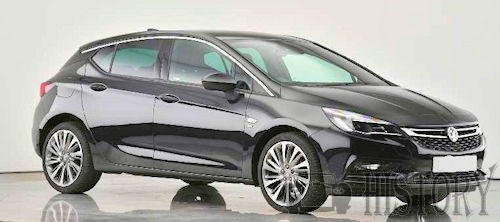 |
|
| Overview | |
| Also called | Holden Astra Buick Verano Hatch |
| Production | 2015–present (Opel) |
| Assembly | Poland: Gliwice United Kingdom: Ellesmere Port |
| Body and chassis | |
| Body style | 5-door hatchback 5-door wagon / estate |
| Platform | D2XX platform |
| Related | Buick Verano Chevrolet Cruze |
| Powertrain | |
| Engine |
|
| Transmission | 5-speed manual 5-speed semi-automatic 6-speed manual 6-speed automatic |
| Dimensions | |
| Wheelbase | 2,662 mm (104.8 in) |
| Length | 5-door hatch: 4,370 mm (172.0 in) Wagon: 4,702 mm (185.1 in) |
| Width | 1,809 mm (71.2 in) |
| Height | 5-door hatch: 1,485 mm (58.5 in) Wagon: 1,499 mm (59.0 in) |
Opel launched a brand–new Astra at the Frankfurt Motor Show, in September 2015. The Astra K is smaller (5 cm), and lighter (up to 200 kilos) compared to Astra J. Although it is smaller on the outside, Opel claims it is bigger on the inside, than the previous Astra J. Depending on the model and trim level it is up to 200 kilograms - at the very least 120 kilograms - lighter than its predecessor.
The completely new vehicle architecture plays a major role in the weight reduction. Every component was checked for compact design and lightweight materials. The bodyshell weight alone was reduced by 20 percent from 357 to 280 kilograms. Additional, chassis-related measures resulted in another 50 kilograms of weight reduction; these include high-strength and ultra-high-strength low-weight steels, compact subframes as well as weight reductions to the front and rear axle. Rear suspension is torsion bar (only with Watts-linkage with top engines), and McPherson struts is it at the front.
Lightweight construction made it possible to save 120 to 200 kg in weight, with the Sports Tourer 1.4 Ecotec DI Turbo (Direct Injection Turbo), for example, a total of around 135 kg. Ultra high-strength steels, which at the same time contribute to weight reduction, defined load paths , and side impact protection, see the five-star result of the NCAP crash test ensure safety .
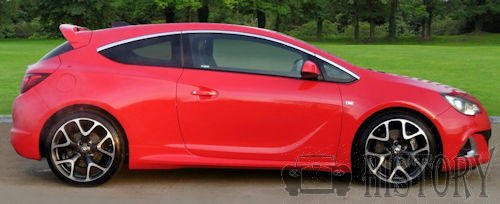
The newly designed four-cylinder engines B14XFL and T with engine blocks and cylinder heads made of aluminum and 1.4 l displacement have turbocharging and direct injection . A turbocharged 3-cylinder gasoline engine with approx. 1 l displacement ("B10XFL") and, with the B14XE, a non-turbocharged engine are also in the range. In addition, diesel engines are also available, see technical data, which achieve a B or A + classification in terms of efficiency. With the facelift in 2019 there were new three-cylinder engines that meet all the Euro-6d emissions standard.
The battery was placed in the trunk for better weight distribution. The steering works with an electric, speed-dependent servo. In the model variants from 92 kW (125 PS), Opel equips the torsion beam rear axle with a Watt linkage for better lateral guidance.
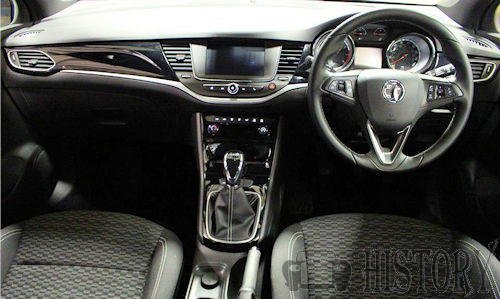
Available engines are 1.0 3-cylinder, 1.4 4-cylinder petrol engines and 1.6-litre diesels. It will be available with new full–LED frontlight techniques, A screen in the dash which connect to Android (only lower R4.0 entertainment system) or iPhone comes as standard. This system is already available, in both the Corsa E and Adam.
| Luggage Capacity | 370 litres |
|---|---|
| Unbraked Towing Weight | 650kg |
| Braked Towing Weight | 1700kg |
Engines
Engines are available with the 5-speed or 6-speed manual transmission, and the newly developed 5-speed semi-automatic EasyTronic 3.0 which is only available for the 1.0T SIDI engine.
1.0T 12V Performance
| Power | 103 bhp |
|---|---|
| Top Speed | 121 mph |
| 0-60 mph | 10.5 secs |
| Torque | 170 Nm, 125 ft-lb |
| CO2 Emissions | 102 g/km |
| Euro Emissions Standard | 6 |
| Miles Per Tank | 675 miles |
The only other available automatic transmission, at the beginning of production, is the 6-speed with active select mode, which can be ordered in late 2015, for the 1.4 SIDI Turbo with 150 PS, and 1.6 CDTI with 136 PS. Buyers can choose the Start/Stop system for all engines as an extra feature, except the 1.0T which will have system as standard.
All engines are new and recently developed by Opel - 1.0T SIDI, 1.4T SIDI (which sees its debut in the Astra K in 2015) and the naturally aspirated version of it (which will be available later in 2015), and the so-called "Whisper diesel" 1.6 CDTI. All turbocharged petrol engines use the Direct Injection Fuel system.
1.4T Petol Performance
| Power | 147 bhp |
|---|---|
| Top Speed | 130 mph |
| 0-60 mph | 8.4 secs |
| Torque | 245 Nm, 173 ft-lb |
| CO2 Emissions | 127 g/km |
| Euro Emissions Standard | 6 |
| Miles Per Tank | 538 miles |
Opel are offering the ecoFLEX range for 1.0T, 1.4T and 1.6 CDTI engines which have same amount of power, but less CO2-emissions (g/km) and lower fuel consumption. The entire ecoFLEX range have Start/Stop as standard, low rolling resistance tyres and aerodynamic tweaks for reduced drag for lower CO2-emissions. The 1.4T SIDI ecoFLEX version have less torque, rated at 230 Nm at 2.000-4.000RPM, and the 1.0T ecoFLEX version is only available with the EasyTronic 3.0 semi-automatic transmission.
2.0T 16V VXR Performance
| Power | 276 bhp |
|---|---|
| Top Speed | 155 mph |
| 0-60 mph | 5.8 secs |
| Torque | 400 Nm, 295 ft-lb |
| CO2 Emissions | 184 g/km |
| Euro Emissions Standard | 6 |
| Miles Per Tank | 443 miles |
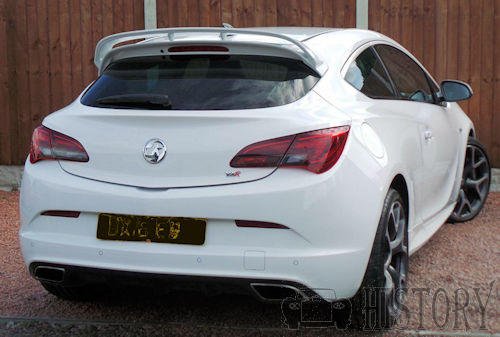
Technical
-
Options: Equipment included on some trim levels - Air conditioning
- Alarm
- Climate control
- Front fog lights
- Headlight washers
- Heated seats
- Height adjustable drivers seat
- Leather seat trim
- Lumbar support
- Sat Nav
- Sports seats
- Steel wheels
Engines
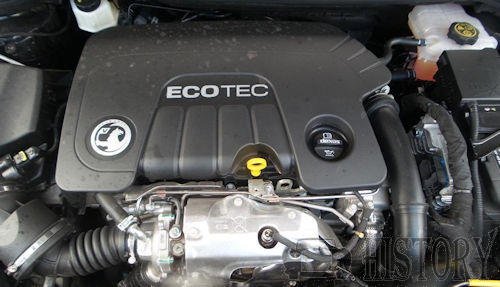
Petrol engines Model Engine Displacement Power Torque Note CO2 emissions 1.0T SIDI S/S I3 999 cc 105 PS (77 kW; 104 hp) at 5000 rpm 170 N·m (125 lb·ft) at 1800-4250 rpm 102-96 g/km 1.4 I4 1399 cc 100 PS (74 kW; 99 hp) at 6000 rpm 130 N·m (96 lb·ft) at 4400 rpm 124 g/km 1.4 SIDI Turbo 125 PS (92 kW; 123 hp) at 5600 rpm 245 N·m (181 lb·ft) at 2000-3500 rpm 114-129 g/km 150 PS (110 kW; 148 hp) at 6000 rpm 245 N·m (181 lb·ft) at 2000-3500 rpm 128-124 g/km 1.6 SIDI Turbo S/S 1,598 cc 200 PS (150 kW; 200 hp) @4,700-5,500 rpm 280 N·m (207 lb·ft) @1,650–3,500 rpm;
overboost 300 N·m (221 lb·ft) @1,700–4,700 rpm139-142 Diesel engines Model Engine Displacement Power Torque Note CO2 emissions 1.6 CDTI I4 1,598 cc 95 PS (70 kW; 94 hp) at 3,500 rpm 280 N·m (207 lb·ft) at 1500–1750 rpm 97-95 g/km 110 PS (81 kW; 108 hp) at 3500 rpm 300 N·m (221 lb·ft) at 1750–2000 rpm 97-90 g/km 136 PS (100 kW; 134 hp) at 3500-4000 rpm 320 N·m (236 lb·ft) at 2000–2250 rpm 103-99 g/km 1.6 CDTI Bi-Turbo 160 PS (118 kW; 158 hp) at 4000 rpm 350 N·m (258 lb·ft) at 1500-2250 rpm 110-107 g/km
